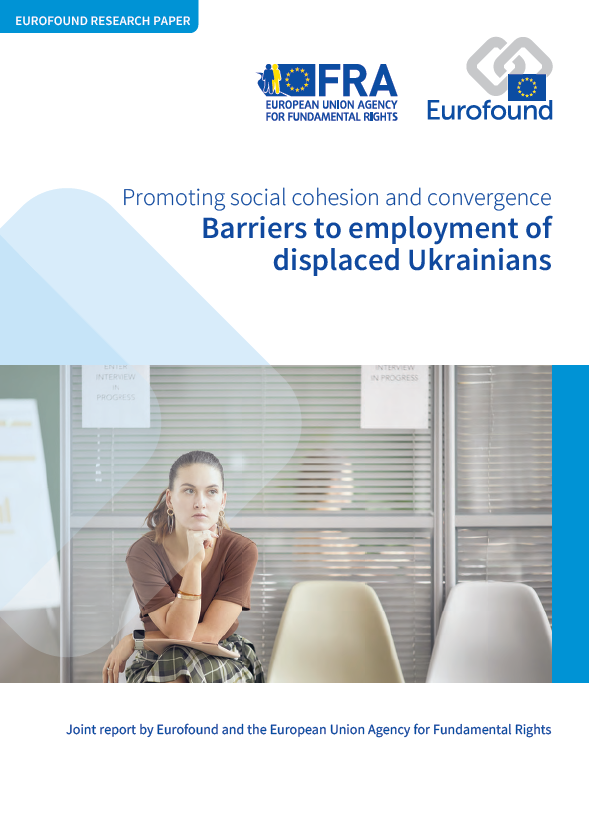
Vastauksena Venäjän Ukrainaa vastaan käymään sotaan EU aktivoi tilapäistä suojelua koskevan direktiivin voidakseen antaa turvaa maasta paenneille ihmisille, jotta he voivat asettua EU:n alueelle ja saada pääsyn julkisiin peruspalveluihin ja työmarkkinoille. Kevääseen 2023 mennessä yli 4,5 miljoonaa ihmistä oli hyödyntänyt tilapäistä suojelua koskevaa direktiiviä tai vastaavia kansallisia suojelujärjestelmiä EU:ssa. Euroopan unionin perusoikeusvirasto toteutti vuonna 2022 verkkotutkimuksen Ukrainasta siirtymään joutuneiden henkilöiden keskuudessa. Eurofound on analysoinut tutkimustuloksia, jotka koskevat vastaajien kokemuksia työnhaussa. Tässä asiakirjassa tuodaan esiin tärkeimmät esteet, joita kotiseudultaan siirtymään joutuneet ihmiset kohtasivat, ja ehdotetaan keinoja, joilla yhteiskuntaan osallistumista voitaisiin helpottaa.
The research paper contains the following lists of tables and figures.
List of tables
- Table 1: Key characteristics of the online survey respondents (numbers and (weighted) proportions)
- Table 2: Respondents’ reasons for not being in paid employment
List of figures
- Figure 1: Host language proficiency of the respondents, by country (%, weighted)
- Figure 2: Contract types among respondents in employment in their host country (%, weighted)
- Figure 3: Barriers reported by respondents who have looked for a job in a host country (%, weighted)
- Figure 4: Probability of experiencing at least one barrier while seeking employment, by gender, age group, education level, financial situation and language skills
- Figure 5: Proportion of respondents who experienced labour market barriers while seeking employment, by barrier and age group (%)
- Figure 6: Proportion of respondents who experienced labour market barriers while seeking employment, by barrier and educational attainment (%)
- Figure 7: Share of respondents who mentioned self-reported barriers among those not in paid work, by country (%)
- Figure 8: Share of self-reported barriers among those not in paid work, by barrier and age category (%)
- Figure 9: Share of self-reported barriers among those respondents not in paid work, by barrier and educational attainment (%)
- Figure 10: Probability of perceiving at least one barrier to entering the labour market, by age, educational attainment, gender, financial situation and language skill groups
- Number of pages
-
32
- Reference nº
-
EF23015
- ISBN
-
978-92-897-2333-6
- Catalogue nº
-
TJ-03-23-207-EN-N
- DOI
-
10.2806/216178
- Permalink
Cite this publication
Eurofound and the European Union Agency for Fundamental Rights (2023), Barriers to employment of displaced Ukrainians, Eurofound research paper, Publications Office of the European Union, Luxembourg.